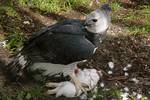- go to the top
- About WN
- Contact
- Feedback
- Privacy Policy
- © 2011 World News Inc., all Rights Reserved
-
Costa Rica

:For the plant genus Costarica, see its synonym Sicyos.
http://wn.com/Costa_Rica -
Phoenix, Arizona

Phoenix ( , O'odham Skikik, Yavapai Wasinka, Western Apache Fiinigis, Navajo Hoozdoh, Mojave ''Hachpa 'Anya Nyava) is the capital and largest city of the U.S. state of Arizona, as well as the fifth most populated city in the United States. Phoenix is home to 1,601,587 people according to the 2009 estimate by the U.S. Census Bureau, and is the anchor of the Phoenix metropolitan area (also known as the Valley of the Sun''), the 12th largest metro area by population in the United States with more than 4.3 million people. In addition, Phoenix is the county seat of Maricopa County, and is one of the largest cities in the United States by land area.
http://wn.com/Phoenix_Arizona
- Amazon Rainforest
- Animal
- ant
- armadillo
- armadillos
- cat
- Central America
- Chordate
- convergent evolution
- Costa Rica
- Cyclopedidae
- Cyclopes didactylus
- echidna
- Family (biology)
- Folivora
- genus
- Giant Anteater
- Mammal
- Myrmecophaga
- Myrmecophagidae
- Neotamandua
- Northern Tamandua
- numbat
- Palaeomyrmidon
- pangolin
- Phoenix Zoo
- Phoenix, Arizona
- Pilosa
- prehensile tail
- Protamandua
- Silky Anteater
- sloth
- sloths
- South America
- Southern Tamandua
- Spanish Language
- Tamandua
- Tamandua mexicana
- termite
- Xenarthra

- Order: Reorder
- Duration: 2:05
- Published: 04 May 2009
- Uploaded: 08 Dec 2011
- Author: TamanduaGirl

- Order: Reorder
- Duration: 0:35
- Published: 09 Jun 2008
- Uploaded: 09 Dec 2011
- Author: TamanduaGirl

- Order: Reorder
- Duration: 3:09
- Published: 04 Jun 2008
- Uploaded: 06 Dec 2011
- Author: BBCWorldwide



- Order: Reorder
- Duration: 1:11
- Published: 12 Jan 2011
- Uploaded: 04 Dec 2011
- Author: ScienceChannel

- Order: Reorder
- Duration: 0:29
- Published: 23 Jul 2007
- Uploaded: 23 Nov 2011
- Author: KnowledgeClips




- Order: Reorder
- Duration: 1:02
- Published: 26 Oct 2007
- Uploaded: 29 Nov 2011
- Author: newscientistvideo


- Order: Reorder
- Duration: 0:54
- Published: 03 Jan 2009
- Uploaded: 09 Dec 2011
- Author: TamanduaGirl

- Order: Reorder
- Duration: 0:49
- Published: 27 Sep 2007
- Uploaded: 12 Nov 2011
- Author: TamanduaGirl


- Order: Reorder
- Duration: 1:36
- Published: 07 Nov 2007
- Uploaded: 29 Nov 2011
- Author: TamanduaGirl



- Order: Reorder
- Duration: 0:23
- Published: 18 Nov 2007
- Uploaded: 21 Sep 2011
- Author: kellster00

- Order: Reorder
- Duration: 0:19
- Published: 01 Jul 2006
- Uploaded: 06 Dec 2011
- Author: kidicarus222

- Order: Reorder
- Duration: 3:18
- Published: 14 Jul 2007
- Uploaded: 07 Dec 2011
- Author: TamanduaGirl

-
 Reasons Bahrain should be Returned to Iran
WorldNews.com
Reasons Bahrain should be Returned to Iran
WorldNews.com
-
 The Threat of War Against Iran and Syria is Real
GlobalResearch
The Threat of War Against Iran and Syria is Real
GlobalResearch
-
 France says Iran still developing nuclear arms
France24
France says Iran still developing nuclear arms
France24
-
 Taliban leaders held at Guantánamo Bay to be released in peace talks deal
The Guardian
Taliban leaders held at Guantánamo Bay to be released in peace talks deal
The Guardian
-
 Mexico's drugs war: Lessons and challenges
BBC News
Mexico's drugs war: Lessons and challenges
BBC News
- aardvark
- Amazon Rainforest
- Animal
- ant
- armadillo
- armadillos
- cat
- Central America
- Chordate
- convergent evolution
- Costa Rica
- Cyclopedidae
- Cyclopes didactylus
- echidna
- Family (biology)
- Folivora
- genus
- Giant Anteater
- Mammal
- Myrmecophaga
- Myrmecophagidae
- Neotamandua
- Northern Tamandua
- numbat
- Palaeomyrmidon
- pangolin
- Phoenix Zoo
- Phoenix, Arizona
- Pilosa
- prehensile tail
- Protamandua
- Silky Anteater
- sloth
- sloths
- South America
- Southern Tamandua
- Spanish Language
- Tamandua
- Tamandua mexicana
- termite
- Xenarthra
size: 7.0Kb
size: 2.3Kb
size: 7.5Kb
size: 8.3Kb
size: 4.1Kb
size: 9.4Kb
size: 1.2Kb
Extant species comprise the Giant Anteater Myrmecophaga tridactyla, about 1.8 m (6 ft) long including the tail; the Silky Anteater Cyclopes didactylus, about 35 cm (14 in.) long; the Southern Tamandua or Collared Anteater Tamandua tetradactyla, about 1.2 m (4 ft) long; and the Northern Tamandua Tamandua mexicana of similar dimensions.
Physiology
The largest extant representative of the group is the Giant Anteater, or ant-bear (Myrmecophaga tridactyla), an animal measuring up to 2.4 meters (8 feet) in length, excluding the tail, and up to 1.2 meters (4 feet) in height at the shoulder. It has a long, thin head and a large, bushy tail. Its prevailing color is gray, with a broad black band, bordered with white, starting on the chest, and passing obliquely over the shoulder, diminishing gradually in breadth as it approaches the loins, where it ends in a point. Giant Anteaters are sometimes mistaken for bears because of their claws and bushy fur. The Giant Anteater is a very solitary animal. In Spanish, an anteater is referred to as an ''oso hormiguero', literally, "anteating bear."Anteaters eat ants, termites and soft-bodied grubs. Using the long, sharp claws on their forelimbs, they open insect colonies and tree trunks. They then use the tongue to collect the eggs, larvae, and adult insects. The salivary glands secrete sticky saliva during feeding that coats the tongue. They only stay at one ant colony for a short period of time to avoid soldier ants, but giant anteaters can consume a few thousand insects in minutes. The tongue is attached to the sternum and moves very quickly, flicking 150 times per minute. They will eat fruit and birds' eggs on occasion.
The Giant Anteater and regular anteaters have no teeth. Their physical digestion is aided by the pebbles and debris that they consume when they ingest insects.
The giant Anteater lives above ground, not burrowing underground like armadillos or aardvarks. The anteater finds a place to sleep, curls up, and covers itself with its bushy tail. Since the anteater is a very solitary animal, it can be easily awoken. When attacked, it can defend itself with its sabre-like anterior claws. The female produces one offspring per birth. During much of its first year of life, a young Anteater will ride on its mother's back. It is generally acknowledged that giant Anteaters have a poor sense of sight but a keen sense of smell. Their sense of smell has been estimated to be some 40 times more sensitive than that of humans.
The name of the species, tridactyla, comes from "tri" and "dactylos", which is Greek for "three fingers". However, giant Anteaters actually have five toes on each paw (the fifth is vestigial). The name probably came about because only three of the front toes have prominent claws and can be easily seen. Giant Anteaters rarely make sounds. When they do it is mostly when they are young; the sound is a high-pitched, shrilly grunt noise. A baby that has fallen off his mother's back will grunt to its mother either to remind her that it has fallen off or to simply instruct her where it is or to get her attention.
The two Anteaters of the genus Tamandua, the Southern Tamandua (Tamandua tetradactyla) and the Northern Tamandua (Tamandua mexicana), are much smaller than the Giant Anteater, and differ essentially from it in their habits, being mainly arboreal. They inhabit the dense primeval forests of South and Central America. The usual colour is yellowish-white, with a broad black lateral band, covering nearly the whole of the side of the body.The silky Anteater (Cyclopes didactylus) is a native of the hottest parts of South and Central America, and about the size of a cat, of a general yellowish color, and exclusively arboreal in its habits.
Both the tamanduas and the silky Anteater possess partially prehensile tails.
Habitat
The anteater is extensively distributed in South and Central America, frequenting low swampy savannas, along the banks of rivers, and the depths of the humid forests, but is nowhere abundant.
Evolution
Anteaters are one of three surviving families of a once diverse group of mammals that occupied South America while it was geographically isolated from an invasion of animals from North America, the other two being the sloths and the armadillos.At one time, it was assumed that anteaters were related to aardvarks and pangolins because of their physical similarities to those animals, but it has since been determined that these similarities are not a sign of a common ancestor, but of convergent evolution. All have evolved powerful digging forearms and long tongues and toothless tube-like snouts in order to make a living by raiding termite mounds. This similarity is the reason aardvarks are also commonly called "anteaters"; the pangolin has been called the "scaly anteater"; and the word "antbear" is a common term for both the aardvark and the giant anteater.
Anteaters are known to inhabit the Amazon Rainforest.
Classification
Order PilosaThe Anteaters are more closely related to the sloths than they are to any other group of mammals, even to the armadillos, their next closest relations. There are three genera still living: the Giant Anteater, the Silky Anteater, and the Northern and Southern Tamandua anteaters, but there are also several extinct genera.
Gallery
References
Further reading
Category:Pilosans Category:Myrmecophagous mammals Category:Mammals of Central America Category:Mammals of South America
ar:آكلات النمل bg:Мравояди br:Merienaer de:Ameisenbären nv:Wóláchííʼ yiyání es:Vermilingua eo:Formikomanĝuloj fa:مورچهخوار fr:Myrmecophagidae ko:개미핥기 hr:Mravojed io:Mirmekofago it:Myrmecophagidae he:דובי נמלים lt:Skruzdėdiniai hu:Hangyászok nah:Āzcacoyōtl mk:Мравојад ml:ഉറുമ്പുതീനി nl:Miereneters ja:アリクイ no:Maurslukere nn:Maurslukar pl:Mrówkojady pt:Tamanduá ru:Муравьеды simple:Anteater fi:Muurahaiskarhut sv:Myrslokar uk:Мурахоїди vi:Thú ăn kiến zh:食蟻獸This text is licensed under the Creative Commons CC-BY-SA License. This text was originally published on Wikipedia and was developed by the Wikipedia community.































